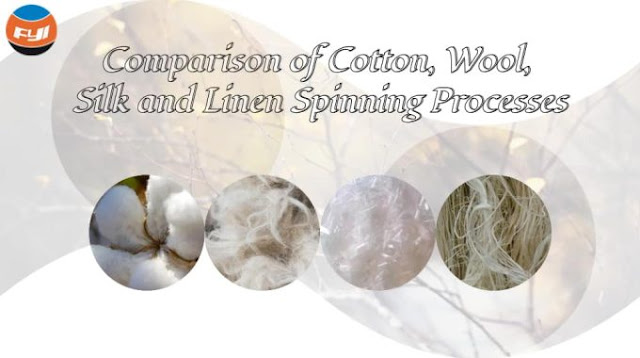Comparison of Cotton, Wool, Silk and Linen Spinning Processes
Spinning, as an engineering technology, processes fiber aggregates, and its essence is the process of changing fibers from a chaotic state into an orderly arrangement in the longitudinal direction. Currently, the commonly used spinning raw materials are mainly natural fibers and chemical fibers. Natural fibers mainly include cotton, wool, silk, hemp and other fibers. The use of natural fibers for spinning has a long history.
Although cotton, wool, silk, and linen are all natural fibers, they have their own characteristics. Some fiber properties are very different, and the spinning performance is very different. It is difficult to use a unified processing method to make spun yarn. Below, we select four common natural short fibers: cotton, wool (hair), spun silk (silk), and ramie (hemp) to compare their spinning processes.
With the development of textile machinery and the improvement of spinning principles, special spinning systems for cotton spinning, wool spinning, silk spinning and linen spinning have been formed after long-term practice. Their technological processes are different.
Although cotton, wool, silk, and linen are all natural fibers, they have their own characteristics. Some fiber properties are very different, and the spinning performance is very different. It is difficult to use a unified processing method to make spun yarn. Below, we select four common natural short fibers: cotton, wool (hair), spun silk (silk), and ramie (hemp) to compare their spinning processes.
With the development of textile machinery and the improvement of spinning principles, special spinning systems for cotton spinning, wool spinning, silk spinning and linen spinning have been formed after long-term practice. Their technological processes are different.
Cotton spinning process
According to the performance of raw materials and product requirements, the cotton spinning process can be mainly divided into carding process, combing process and waste spinning process.
Click to get more details about cotton spinning process
- Carding process
- Combing process
- Waste spinning process
Click to get more details about cotton spinning process
Wool spinning process
According to different product quality requirements and processing techniques, the wool spinning process can be mainly divided into carded wool spinning system, combed wool spinning system, and semi-worsted wool spinning system.
- Carded wool spinning process
- Worsted wool spinning process
- Top manufacturing process flow
- Strip dyeing and recombing process
- Semi-worsted wool spinning process
More details can be found here.




Comments
Post a Comment